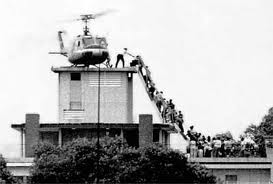COLD WAR
Yalta, February 4-11, 1945
• Big three
• Agree to a United Nations
• Soviets make clear that they will not leave Eastern Europe
• Germany divided into zones of occupation.
• Russia agrees to attack Japan.
• Establishes initial lines of cold war.
Germany surrenders, 1945
• Soviets take Berlin May 2
• Germany surrenders unconditionally May 7
• Roosevelt died April 12
A post-colonial moment
• British, French, German, Japanese and Italian empires are destroyed or weakened.
• U.S. and Soviet Union spheres of influence
National Security Act, 1947
• National Military Establishment
– Secretary of Defense
• Army
• Navy
• Air force
– Joint chiefs of staff made permanent
– CIA
Containment
• Long telegram, George Kennan, 1947
– Soviet Unions seeks to expand communism wherever it can
– U.S. must oppose communism wherever it can.
Marshall Plan, 1948-1951
• George C. Marshall, Secretary of State
– $13 billion in European reconstruction
Berlin airlift
• 1948, Allied zones of occupation unified and become functional government
• Soviet union, in response to Marshall Plan and unification of Allied zones, blockaded West Berlin.
• U.S. responds with massive airlift.
• Soviet lift blockade after 10 months.
• 1955, West Germany gained full sovereignty.
Communism in South Asia
• Chinese civil war won by communists in 1949.
• Communist principle of economic self-sufficiency
– Opposition to capitalist imperialism.
• 1950, U.S. recognize French-supported emperor Bao Dai of Vietnam.
– Seeking friendly regime in Southeast Asia
Korea
• 1945, Japanese withdraw from Korea
• 1945, Soviet Union occupied North Korea (to 38th parallel)
• Americans occupy South Korea up to 38th parallel
• June 25, 1950, North Korea invaded South Korea
• Truman responds with force under the auspices of the UN rather than asking for a declaration of war
Korean conflict
• Un forces pushed to Puson
• MacArthur effects landing at Inchon while UN forces break out of Puson.
• Truman agrees with MacArthur to unify Korea, and UN troops push as far as the Yalu River
• Chinese “human wave” assault (260,000 soldiers) push UN forces below 38th parallel
• 1953 truce divided Korea at the 38th parallel
Consequences of Korea
• Precedent of large-scale military conflict without congressional declaration of war.
• Truman, believing the Korean conflict was part of a global communist offensive, increased assistance to the French in Vietnam (Military Assistance Advisory Group).
Nationalism in Indochina
• British Indochina independent
– India, Pakistan, Sri Lanka, Myanmar, Malaysia
• French retain Indochina (as do Dutch)
– Attempt to retake area abandoned by Japanese and held by local nationalists
– 1945, Ho Chi Minh proclaims Democratic Republic of Vietnam with capital in Hanoi (North Vietnam).
• Received aid from U.S. against Japanese
First Indochina War
• 1946, French recognize DRV as “free state” within French empire
• 1949, French reverse themselves and reinstate emperor Bao Dai
• 1949, communist china recognizes DRV
• 1949, U.S. recognizes Bao Dai government
Dien Bien Phu
• DRV has support from China and Soviet Union
• Bao Dai from France and U.S.
• French are defeated at Dien Bien Phu
Geneva Accords
• Laos and Cambodia neutral
• Vietnam divided at 17th parallel.
• Elections in 1956
National Liberation Front
• premier Ngo Dinh Diem at U.S. request
– Supposed to institute Democratic reforms but doesn’t.
• Gets CIA and military aid
• Diem ousts Bao Dai and refuses to hold elections in 1956
• South Vietnamese guerillas (viet cong) begin resistance to Diem government.
Kennedy years
• U.S. military advisors increased from 2,000 to 16,000
• Oppressive Diem government creates more opposition in South Vietnam
• North Vietnam sends supplies to Viet Cong through Ho Chi Minh trail
• 1963, Diem killed in coup led by generals.
Tonkin Gulf
• Lyndon Johnson did not believe Vietnam was worth fighting for or winnable, but he believed that perceived weakness in Vietnam would open his administration to criticism from hawks.
• Two American destroyers observing U.S. sponsored attack in North Vietnam.
– Johnson claimed that the destroyers were attacked.
– Later admitted the claim was probably bogus.
– Johnson interpreted the Tonkin Gulf Resolution as authorization to use unlimited military force in Vietnam.
U.S. combat forces arrive
• Johnson orders “Rolling Thunder” bombing of North Korea
• Airbase has to be protected by U.S. troops.
• Mission expands to “search and destroy” patrols.
• 1965: 184,000 U.S. troops
• 1966: 385,000
Nixon in Vietnam
• Vietnamization
• Growing opposition at home.
• Gradual drawdown
• Expanded bombing

